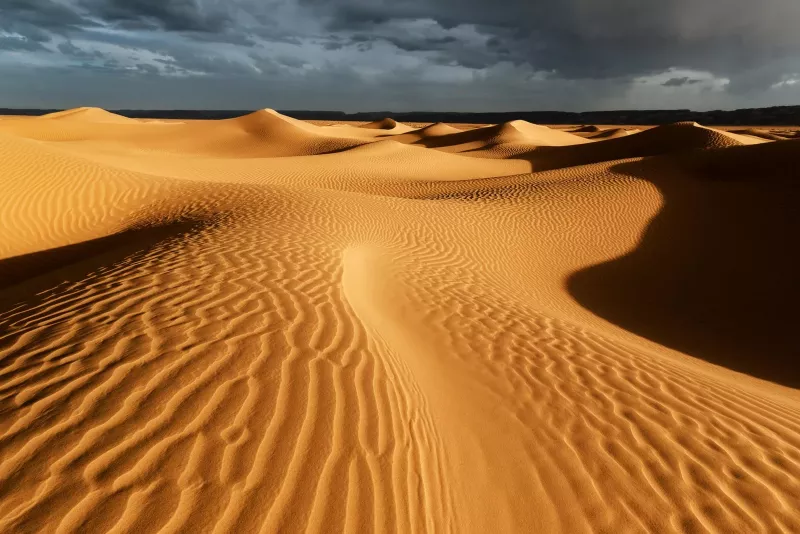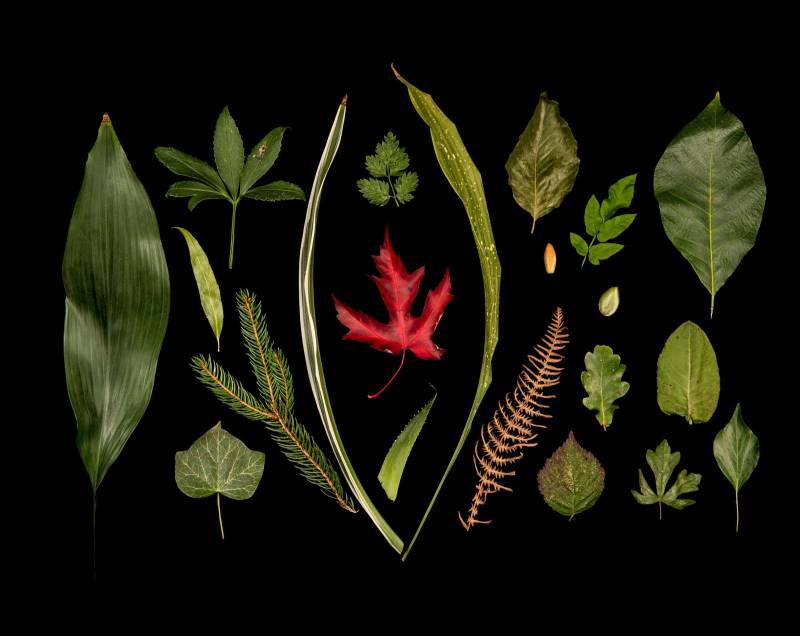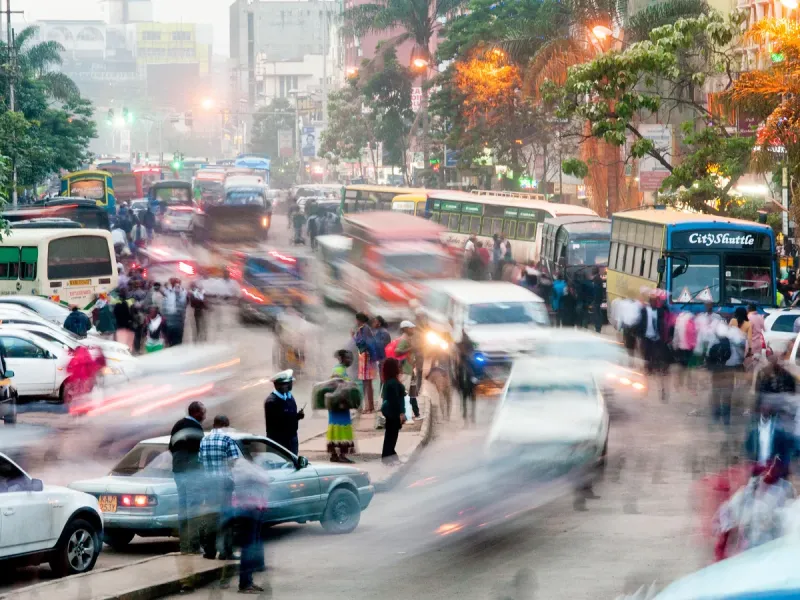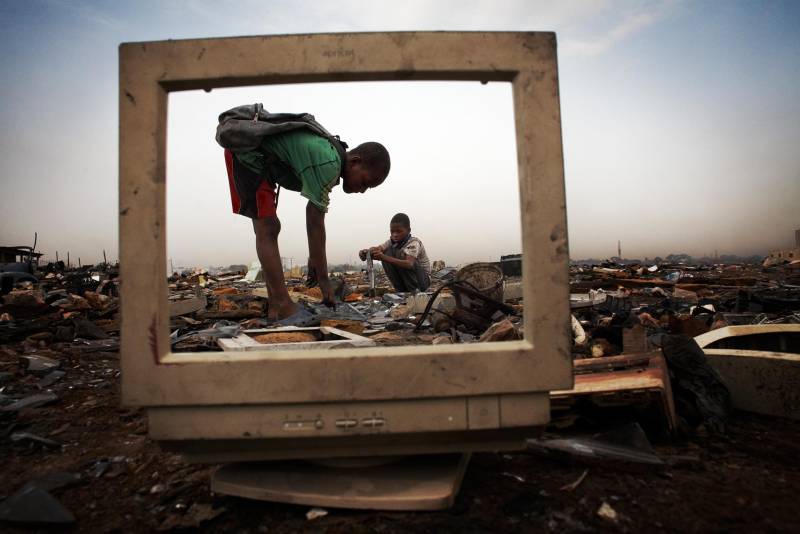When political leaders, climate scientists, and campaigners gather for the UN COP27 climate change meeting in Sharm el-Sheikh, Egypt, one particular consequence of global warming will be thrown into focus: water insecurity. Egypt is vulnerable to drought, but at present ranks as the most water-secure nation on the African continent. In part, this is due to the abundance of water brought into the country by the River Nile, and a nationwide plan to improve access to water. But that balance might change, as arid areas of East Africa are expected to experience more frequent droughts in the future.
The effects of long periods of drought are already being felt in Egypt. "The temperature is ascending and the crop is going to corrupt," says Hosney Mohamed Hussein, who goes by Abdo, as he surveys his tomato crops on his small farm in the Suhag region of Egypt. Abdo, in his 60s, inherited his 20-acre (eight-hectare) farm from his father and grandfather, who have worked this land on the banks of the Nile since 1952. The Suhag region is becoming increasingly desertified, he says.
He used to grow onions but switched to tomatoes to save water. But climate change is having a number of other effects on his crops. The cultivation season is getting shorter. While previously crops would be sown in August and harvested in June – avoiding the hottest months and allowing for two crops each season – increasing temperatures mean that the end of the agricultural season has moved to the middle of March. Temperatures are also spoiling seeds before they even go into the ground and crops are perishing on the vines.
Abdo lost a large amount of his tomato crop last year because of an unexpectedly large increase in temperature, he says, adding that the beginning of summer 2021 was extremely hot. One-third of the world's food is produced by smallholders like Abdo. In a country like Egypt, which produces a vast array of produce, from tomatoes, onions, dates, and mangoes to rice and wheat, smallholders are essential to its food security. While a large producer of wheat itself, Egypt is also one of the world's biggest importers of grain as it accounts for more than 35% of the average calories consumed per person in the country.
The traditional flatbread Baladi, for example, is a staple food in Egypt, but disruption to global wheat supplies has sent prices soaring in 2022, leading the government to step in to fix the price of bread. Much of the disruption has been due to the war in Ukraine, which has dramatically decreased imports of wheat across the whole of Africa. Egypt was the largest importer of Ukrainian wheat before the Russian invasion, getting roughly 80% of its wheat from Russia and Ukraine. It has meant that the role of smallholders within countries is ever more important. So how are smallholders adapting to water restrictions? And how can water-sensitive countries improve their food security?
Some Egyptian farmers are starting to use irrigation, fertilizers, and pesticides as a way of protecting their crops from climate change, but these techniques come with high costs which are prohibitive for small, independent farmers like Abdo, and are only rising further as a result of the war in Ukraine. Abdo says that the price of one tonne of calcium and potassium nitrate ranges from 25,000-60,000 EGP (£1,135 - £2,724 / $1,274 - $3,058), which he says is a very high cost for smaller farmers. One tonne of these fertilizers will cover about two acres of Abdo's land for a year, so his annual costs might be as high as 600,000 EGP (£27,460/$30,520).
Farmers here often have to rely on their own means to tend to their crops. Irrigation in the deserted regions of upper Egypt depends on groundwater wells. "We are in a region where Nile water doesn't reach," he adds. While some nations, like Saudi Arabia and the UAE, are experimenting with seawater desalination and sewage treatment to irrigate crops, these options are not widespread in Egypt. For Abdo, his well is the only means of irrigation, which is expensive – in terms of labor to dig the well and then to install and run a motor and pipes to raise the water. Preparing for future crises goes hand in hand with improving water security, and farmers are particularly well equipped to handle these surprises, says Maximo Torero, the chief economist and assistant director-general for the Economic and Social Development Department at the Food and Agriculture Organization of the United Nations. "We have seen shocks like Covid-19 [but farmers] were able to handle it," he says in an interview with the new presenter of Follow the Food, environmental journalist Amanda Little. "There were some logistical problems in the beginning but the farmers showed… that they are resilient. We are seeing now a new shock which is [rising] energy prices, [but] our farmers are still planting. But clearly, if we don't change the way we think and we don't understand the importance of this sector… there is a limit to which our farmers can resist."
Torero gives an example of how new technologies can help farmers to reduce their water requirements, such as drip irrigation or precision agriculture methods. He says that technology normally works at scale but the challenge is to bring the benefits of technology to smallholders, who are the most constrained by financial budgets. Brian Pickering, a fifth-generation farmer whose family has been on their 2,000-acre (809-hectare) farm in Iowa, USA, since 1872, has adopted technology on his farm, using a drone to seed cover crops among his soya plants. Cover cropping involves planting a secondary crop between main crops to cover what would otherwise be bare earth.
The technique helps to preserve soil structure and store carbon there while also retaining vital water and nutrients.. The drone allows Pickering to spread his cover crop without driving a vehicle over the fields, which would damage the main crop as it matures. You can see how Pickering uses his drone to plant cover crops without damaging his harvest in the film below. 00:00 / 01:44 ADVERTISEMENT While Abdo, the Egyptian farmer, grows his tomatoes in simple greenhouses where he still has to contend with the heat, cold, and pests, his farm is a world away from the most state-of-the-art examples in Europe. They provide a glimpse of just what is possible and how cutting-edge technology can be deployed to grow these fruit with as little water and energy as possible. For example, Toby White owns a 25-hectare (62-acre) greenhouse in the Bordeaux region of France where his tomato crops can grow year-round.
The greenhouse is climate-controlled thanks to evaporation pads that, with the assistance of fans, suck air from outside the greenhouse over a fine mesh soaked in water, cooling the air down. Thus the humidity can be maintained while pests are prevented from entering the greenhouse. Should any pests make it past the fine mesh pads, biological controls – insects that prey on parasites – are released to keep their numbers down. The greenhouse is therefore also able to be kept pesticide-free. This level of sophistication means that the tomatoes on White's farm are grown as efficiently as possible – 1kg (2.2lb) of tomatoes requires 10 liters (2.2 gallons) of water, compared with 25 liters (5.5 gallons) for the same amount of production elsewhere. "I think continuing [to innovate] is part of our industry," says White. "You have to keep asking yourself questions in order to improve." The water used on White's farm is carefully conserved, which in addition to the other climate-control measures means the farm is carbon-negative Climate change is not the only reason Egypt's water security is under threat.
The Nahda Dam crisis has highlighted the country's dependence on the Nile, from which comes 97% of Egypt's freshwater.The country's population is expected to expand considerably, says Abbas Sharaky, professor of geology at Cairo University. As pressure on food production increases, there are predictions that the demand for water is likely to outstrip what the Nile can supply within the current decade. Outdated farming techniques use what water it is inefficient. Mohamed Fahim, the consultant on climate change to the minister of agriculture, says that Egypt's agricultural industry is "climatically fragile" with 60% of farmland in Egypt managed under outdated agricultural techniques, which makes the land sensitive to water crises. For example, some farmers depend on flood irrigation, whereby water is lifted from a canal by machine and then tipped over land, which consumes more water than modern techniques like drip irrigation. Fahim adds that the Egyptian government has produced an agricultural plan to deal with the shortage of water, which involves expanding farmland into previously unfarmed areas.
There are plans to prohibit flooding irrigation on these new lands, as well as plans to introduce varieties that can cope with Egypt's long, cold winters and prepare for dust storms, which can cause diseases like "purple sting", by preventatively spraying crops with a protective coating. In addition, farmers are moving towards early-ripening varieties of wheat and maize to shorten the cultivation period and save water, and the government is building silos to create a reserve in case of future global crises. Egypt stores its annual share of water at the Aswan High Dam. But when the dam was constructed in 1970, the population of the country was around 25 million, says Abbas Sharaky. Then, the dam produced around 2,000 cubic meters (70,630 cubic ft) per person, he adds, saying that the country aims to provide 1,000 cubic meters (35,515 cubic ft) per person.
Today, the population is close to 104 million, which equates to 500 cubic meters (17,657 cubic ft) each. Mohamed Ahmed Omar, a Sudanese agricultural expert, and member of the Australian delegation of the Food and Agriculture Organization (FAO), says Egypt will need to work with neighboring countries to secure water for the wider region.
The construction of the Ethiopian Nahda Dam could put more pressure on the Aswan High Dam. Sharaky says that in the last three years, Egypt's share of Nile water hasn't decreased because there has been a succession of "flood years" in which rains increase. When the Nahda Dam opened with its first phase of filling in 2020, Egypt was unaffected. But as the dam continues to fill and with the approach of the "lean years", in which rains decrease, Egypt's share will be "undoubtedly harmed", he warns, and Egypt will have to pay much more to find other sources of water. "Within two decades, Egypt will be in great water danger," agrees Omar.
While the situation now might not look too severe, both experts warn of the forthcoming challenges. Abdo, the farmer, is still concerned with keeping his motorized well running and his tomatoes flourishing. Talk of international strategies at COP27 seems a long way away. But he is hopeful this year's crop will do better than his last. IN ASSOCIATION WITH Follow the Food Follow the Food is a multimedia series by BBC Future and BBC World News that investigates how agriculture is responding to the profound challenges of climate change, environmental degradation, and rapidly growing populations that face our global food supply chains. Follow the Food traces emerging answers to these problems – both high-tech and low-tech, local and global – from farmers, growers, and researchers across six continents.




